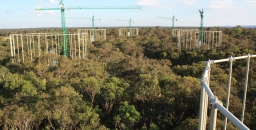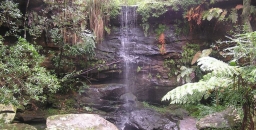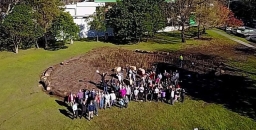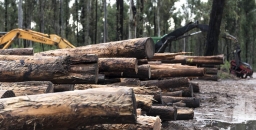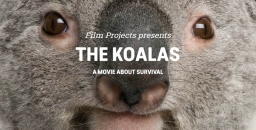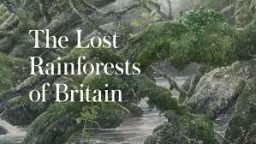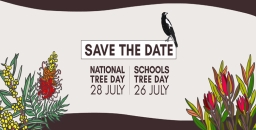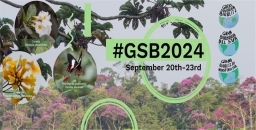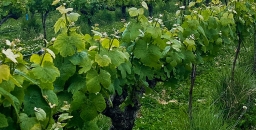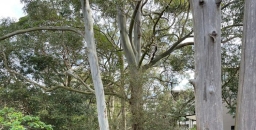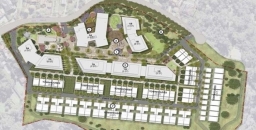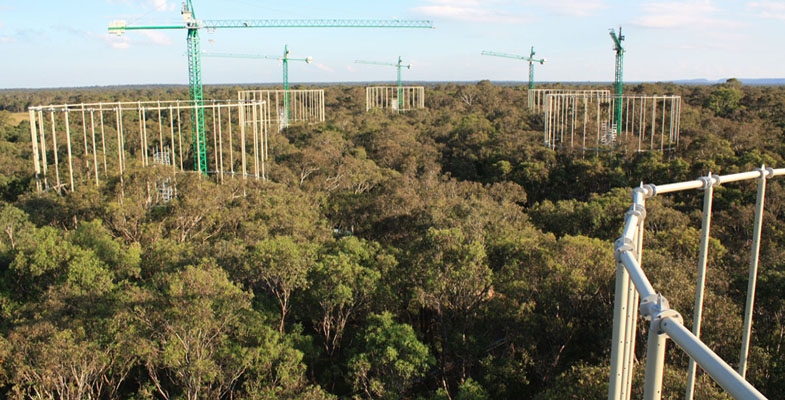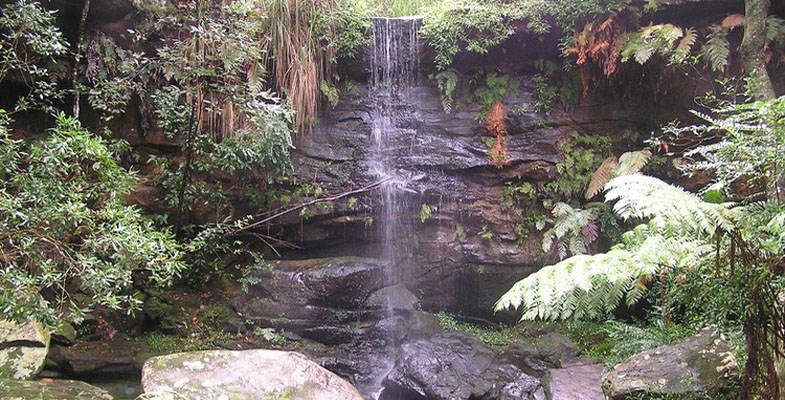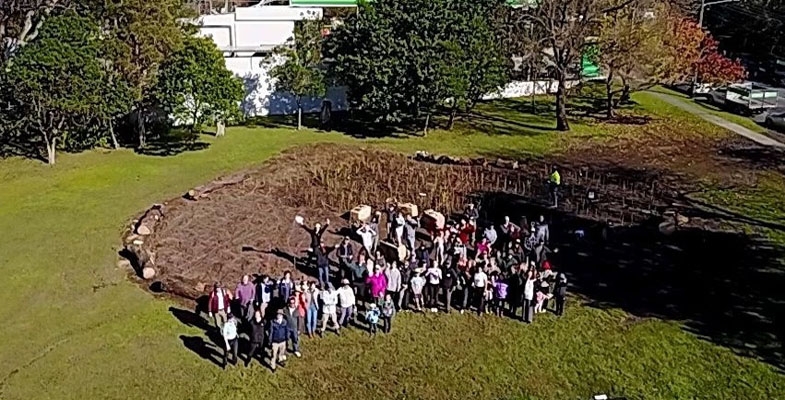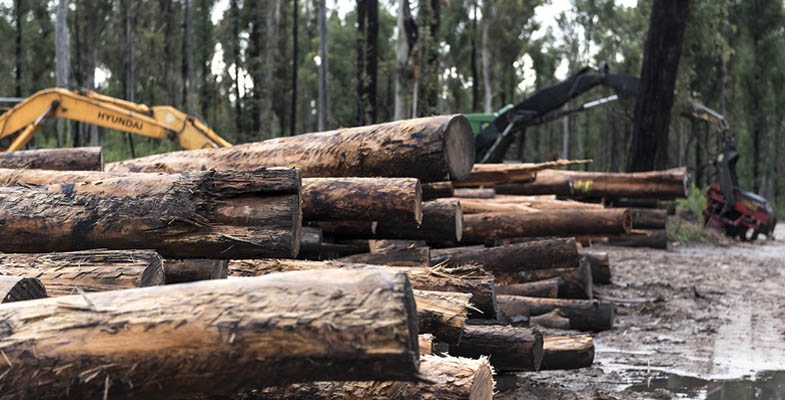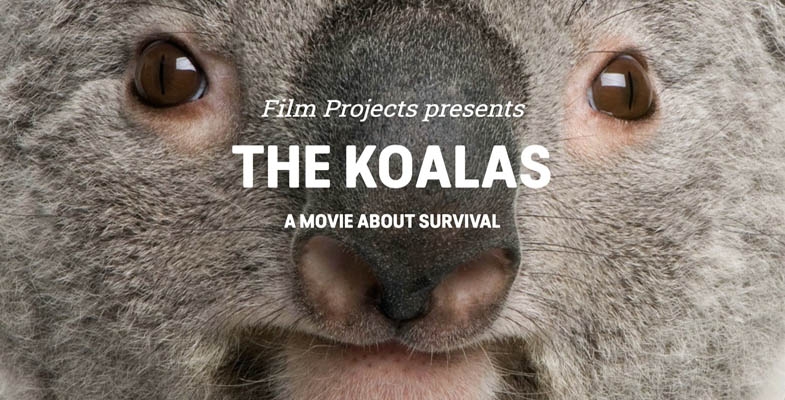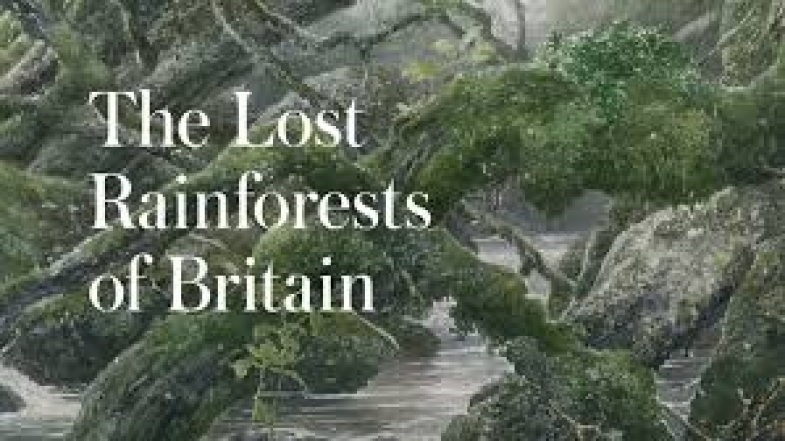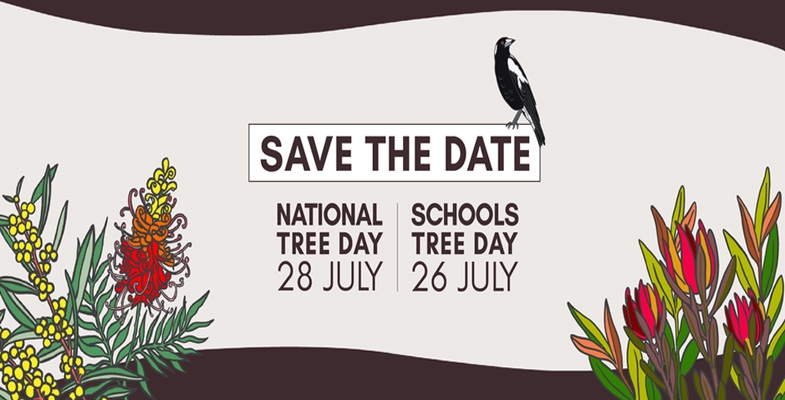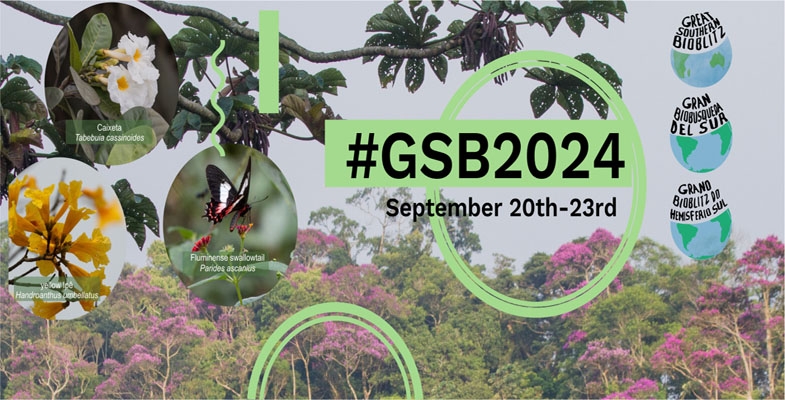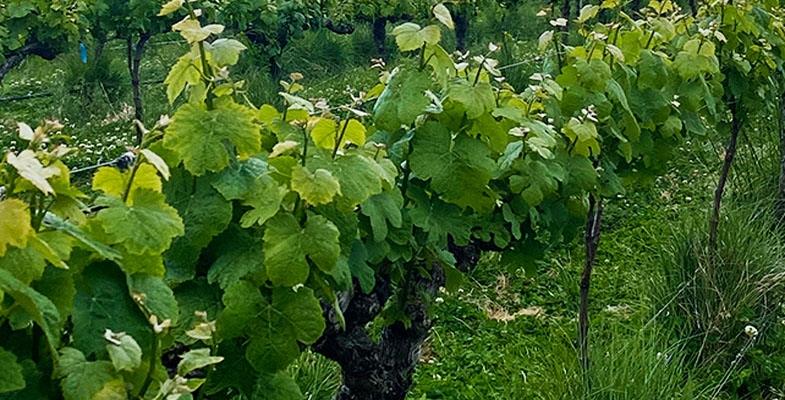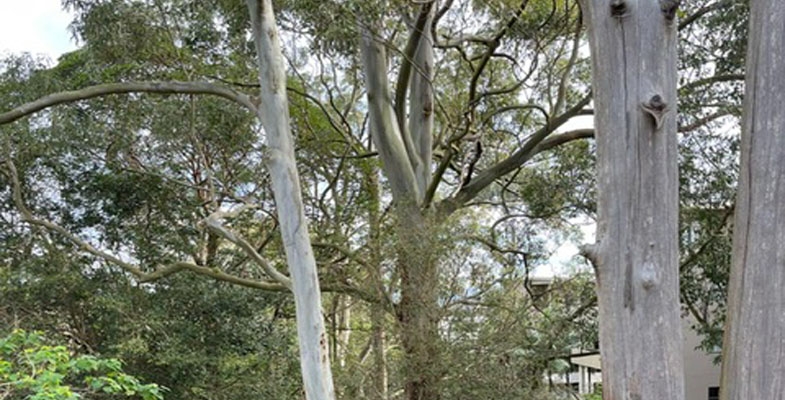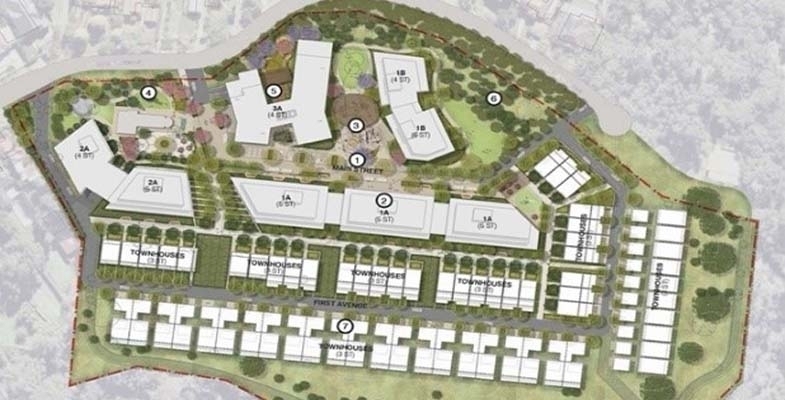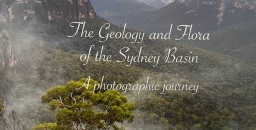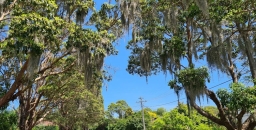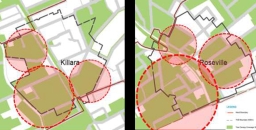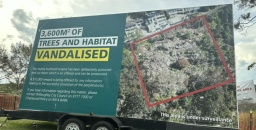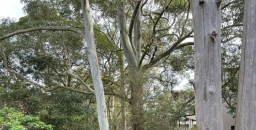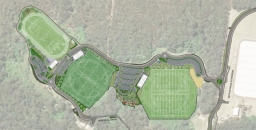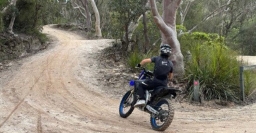STEP Matters 226
- Default
- Title
- Date
- Random
- As humanity continues to burn fossil fuels, the delicate balance of life on Earth is changing. That’s true of trees,…Read More
- Rofe Park Turramurra was not on Wikipedia before now – there is an entry for Rofe Park in Hornsby that has…Read More
- The concept of a Tiny Forest was developed in the early 1970s by the Japanese forest ecologist, Akira Miyawaki, as…Read More
- What is being overlooked in current international climate policy under the Paris Agreement is the crucial role of biodiversity in…Read More
- Please go and see the documentary The Koalas to get a graphic view of the ridiculous situation in NSW where…Read More
- Rainforests in Britain? Surely not! What have you been smoking? Well, please buy and read this book and blow your…Read More
- National Tree Day is on Sunday 28 July. It was co-founded by Planet Ark in 1996 and it has since…Read More
- The Great Southern BioBlitz (GSB) is an exciting international initiative that embarks on an intensive biological survey during the vibrant…Read More
- We don’t tend to associate bats with winemaking except to consider that flying foxes or fruit bats might happily eat…Read More
- We made only one submission in the last two months. This was in relation to a public hearing on a…Read More
- The prolonged process of applications to redevelop the Lourdes Retirement Village in Stanhope Road, Lindfield (explained in (explained here) culminated…Read More
A fierce battle is being fought in the soil beneath our feet – and the implications for global warming are huge
As humanity continues to burn fossil fuels, the delicate balance of life on Earth is changing. That’s true of trees, many of which are growing faster as a result of increased carbon dioxide (CO₂) concentrations in our atmosphere.
But not all trees are responding in this way. In particular, eucalypts – Australia’s iconic forest trees – haven’t benefited from the increase in CO₂ as they were expected to.
Why not? Our new research, published today in Nature, shows it comes down to a below-ground battle for phosphorus, a mineral nutrient in soils that is essential for tree growth. The results suggest in some parts of the world, increased CO₂ means tiny bugs in the soil 'hold onto' their phosphorus, making less available for trees.
This is alarming news, because according to current projections, global forest growth is meant to limit damage from global warming.
What our study involved
Our study used data from a Western Sydney University experiment known as Eucalyptus Free Air CO₂ Enrichment, or EucFACE. The experiment is located in a century-old Cumberland plain woodland in Sydney’s Hawkesbury district.
CO₂ is released into the woodland through a computer‐controlled system. Scientists then monitor the effects on trees, soils and the broader ecosystem. Over six years, CO₂ was raised to the levels expected around the year 2050 (according to the current business-as-usual emissions trajectory).
Our previous studies found the woodland trees did not show any extra growth at high CO₂ levels. We suspected the low availability of soil phosphorus was the cause, and set out to test this.
Phosphorus is crucial to the process of photosynthesis that makes trees grow. Phosphorus in soil is provided by bugs known as microbes. These micro-organisms break down dead and decaying matter, and in the process change phosphorus into a form that plants can take up with their roots.
Most Australian soils are naturally low in phosphorus, because they are derived from ancient, nutrient-depleted rocks. The same is true for most soils in tropical and subtropical regions. That makes the phosphorus service provided by microbes even more important.
We sampled phosphorus in all parts of the ecosystem, tracing its journey from the soil to the trees. We found under high-CO₂ conditions the microbes keep more of the phosphorus they produce, to aid their own metabolism. This left less available for trees to take up.
This occurred despite the trees trying to 'bargain' for phosphorus by releasing extra carbon into the soil to feed the microbes.
What’s more, trees are big 'recyclers' of phosphorus – they remove half of the phosphorus from any leaf before it falls. But this was still not enough to support extra tree growth.
EucFACE is designed to predict the effects of rapidly rising atmospheric carbon dioxide on Australia’s unique native forests.
Why this matters
Our study is the first to show how the phosphorus cycle is affected by high CO₂ – and in particular, the role of soil microbes.
The results are important to predicting soil phosphorus availability, and plant productivity, in woodlands and forests as CO₂ levels increase in the atmosphere.
Current climate projections assume increasing CO₂ will lead to more forest growth globally. Forests are a vital carbon 'sink' – that is, they draw down carbon from the atmosphere. So the increased forest growth was projected to go some way to limiting the effects of climate change.
If our results are taken into account, future warming would be higher than current projections. However, it’s important to verify our results in other locations, with other tree species. New experiments are being formed by overseas teams, including in the Amazon rainforest, to test the findings.
Importantly, our results don’t mean that forests are not a crucial sink for carbon. Forests hold a vast quantity of carbon. Avoiding deforestation and planting new forests are both valuable means of maintaining and adding to carbon stores.
Our research demonstrates the importance of considering soils when growing trees. We also hope our research stimulates further efforts to find phosphorus in ecosystems, especially in tropical rainforests where phosphorus is often greatly limited.
Kristine Crous, Senior Lecturer, Hawkesbury Institute for the Environment, Western Sydney University; Belinda Medlyn, Distinguished Professor, Ecosystem Function and Integration, Western Sydney University, and David S Ellsworth, Professor of Plant Eco-physiology, Western Sydney University
This article is republished from The Conversation under a Creative Commons license. Read the original article.
Rofe Park Turramurra is now on Wikipedia
Rofe Park Turramurra was not on Wikipedia before now – there is an entry for Rofe Park in Hornsby that has been there a while. I first submitted the article to Wikipedia in February 2024, after much change and back and forth with editors, the article was accepted and created on the 21 June.
My reason for getting Rofe Park Turramurra on Wikipedia was that it reaches much further and is more permanent than the website and domain created in 2022.
The disadvantage of a website is that it needs to be managed and a payment made for the domain yearly and obviously I won't be around forever! In the future the Wikipedia site can be edited by others.
During the last year, Councillor Jeff Pettett tried again to get Rofe Park heritage listed. This failed for the second time, the council heritage committee were not interested. I think we can give the idea a miss. The heritage listing is symbolic only and would have had no influence on development near the park. If the councillors were determined to vote for synthetic turf on Mimosa Park they would have done so regardless of a heritage listing. See for example, Gardiner Park, Banksia in the Bayside area.
I hope that eventually we can get a decent sign at the Mimosa Road entrance for Rofe Park. If anyone would like to make a bit of noise about this please feel free!
My next task is to work out how to add pictures to the Wikipedia article. Nothing is straightforward and everything must be a watertight public copyright to be on Wikipedia. My estimation of the information on Wikipedia has improved enormously now I know how difficult it can be to get published.
Here is an extract from the Wikipedia article describing how Rofe Park became council land:
Thomas and Minnie Rofe were living in Wahroonga, Sydney in 1927 when they gave the 50 acres of land to the Council of the Shire of Ku-ring-gai.
In the Sydney Morning Herald article dated 6 April 1927, Councillor Thistlethwayte, president of Ku-ring-gai Shire said:
This generous act on Mr Rofe’s part, is being consummated to-night in the transfer of the property to the council, and the execution of a deed of trust by the council, so that the area will for all time be an open space in which the preservation of the natural fauna and flora will be a dominant feature. The land is well wooded and includes a natural cave unsurpassed in the metropolitan area.
This article has been written by Trish Lynch, STEP’s Facebook manager, who lives near Rofe Park and has studied its history.
Tiny forest planted in West Pymble – how well will it grow?
The concept of a Tiny Forest was developed in the early 1970s by the Japanese forest ecologist, Akira Miyawaki, as a means of restoring degraded urban and industrial environments. The area to be restored can be as small as 3 m2 but is usually about the size of a tennis court.
The method involves the following steps:
- determine the plant species native to a given area;
- improve the soil by mixing in organic material;
- plant seedlings of native trees and understorey plants in a dense, mixed manner (about three seedlings per square meter) meant to simulate a natural forest;
- remove weeds from the site for up to three years after planting, if necessary.
After that, the grove is left to its own devices. Due to the dense planting, the seedlings grow quickly as they compete for sunlight. It is claimed that growth is about 10 times faster than in a natural forest.
Ku-ring-gai Council worked with Earthwatch Australia in partnership with BUPA to establish a tiny forest at West Pymble Village Green. About 70 locals joined in the planting day on 17 June 2024. A site was chosen that was large enough for the forest to cover a small part of the open space and not impact on existing users.
Council’s nursery provided approximately 980 native plants to grow the tiny forest and the Indigo Native Nursery provided a further 490 native species. Nursery volunteers have propagated and cared for these seedlings, which all belong to the Sydney Turpentine Ironbark Forest ecological community. Seed and cuttings were collected from local populations to ensure the tiny forest is suited to Ku-ring-gai’s conditions and ensure the continuation of wild plants.
The results of the tiny forest will be monitored with the help of citizen scientists and local schools. The research data gathered by the Earthwatch Tiny Forest program will go towards a global research project that looks at tiny forests from around the world. School children and communities monitor biodiversity, growth rates, carbon storage, thermal comfort, water infiltration, soil condition, social benefits and learn about the importance of local biodiversity to our lives.
Will this forest thrive in Sydney’s conditions?
STEP member and experienced bushcarer Janet Fairlie-Cuninghame has expressed doubts about the Miyawaki concepts achieving the claimed benefits in the Sydney environment. She points out that we have a very diverse plant community and local ecology; with very different climate, geology, soil types and plant ecology. Janet cites examples of projects run by the NPWS rangers that are well versed in working with the community on planting days. They use local provenance for planting material and a diverse species selection which grows quickly and establishes a natural balance of diverse structure and layers. Ground covers, shrubs and understorey are all important components to make a sustainable balance.
There is extensive discussion that provides a broader perspective about the use of the Miyawaki method. It has been successfully used to restore industrial sites in Japan and to create greener urban environments but has not been so successful in other countries such as India.
Time will tell how successful the project will be in Sydney.
Adrienne McLean has provided us with a personal perspective of the event
On a beautiful Sunday morning, the community of West Pymble and Ku-ring-gai gathered for a remarkable event: planting a tiny forest. Hosted by Ku-ring-gai Council, in collaboration with horticulturists, community scientists, and Earth Watch, this event was a testament to the power of community action.
The tiny forest project is a scientifically managed initiative with three distinct sections: two planted by event attendees and one by local schools. Each section uses different fertilizers and levels, providing a controlled environment for scientific observation. Children, parents, and locals enthusiastically participated, planting native species that we can all watch grow and flourish over time.
I’m especially excited to watch the eight plants I planted thrive. It’s going to be a joy to pass by this tiny forest and see how our collective efforts have taken root and grown.
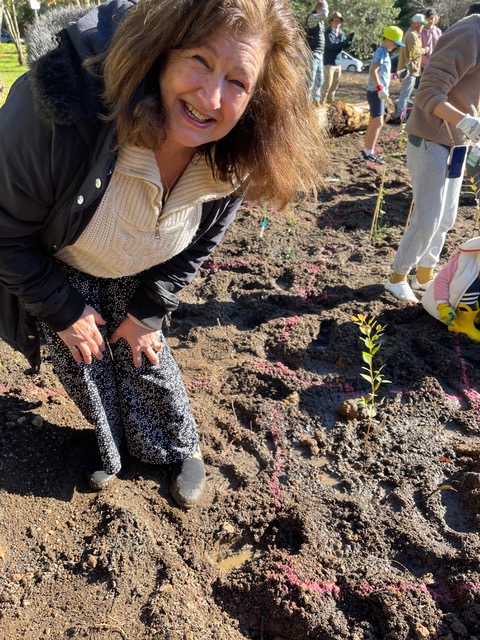
Ending native forest logging would help Australia’s climate goals much more than planting trees
What is being overlooked in current international climate policy under the Paris Agreement is the crucial role of biodiversity in maintaining healthy ecosystems and their integrity, which keeps carbon stored in forests, not the atmosphere. Healthy ecosystems are more stable and resilient, with a lower risk of trees dying and lower rates of carbon emissions.
The way we currently count carbon stores risk creating incentives to plant new trees rather than protect existing forests. Yet old-growth forests store vastly more carbon than young saplings, which will take decades or even centuries to reach the same size.
Can ending native forest logging help the climate?
We’ll need to go further and ban logging in all native forests in Australia to help meet our net-zero emissions target, while meeting timber demand from better-managed and increased plantations.
Stopping native forest logging avoids the emissions released when forests are cut and burned. It would also allow continued forest growth and regrowth of previously logged areas, which draws down carbon from the atmosphere and increases the amount held in the forest ecosystem.
The natural biodiversity of our native forests makes them more resilient to external disturbances such as climate change. These forests have larger and more stable carbon stocks than logged areas, newly planted forests and plantations.
If we compare forests protected for conservation with those harvested for commodity production in the Victorian Central Highlands, research shows conservation delivers the greatest climate benefits through continued forest growth and accumulating carbon stocks.
There are growing calls to create the Great Forests National Park to the north and east of Melbourne, which would protect a further 355,000 hectares and more than double protected forests in the Central Highlands.
Net zero: deep, rapid, sustained cuts needed
The world’s nations are aiming to reach net zero by mid-century. Meeting this target will require deep and rapid cuts in carbon dioxide emissions as well as pulling carbon out of the atmosphere into land sinks, especially forests.
The land sector is unique in that it can be both a source (logging, agriculture) and a sink (forest regrowth, for instance) for carbon. The natural way forests take up carbon can be increased through natural regrowth or plantations.
Unfortunately, the current approach, based on IPCC guidelines, to counting this type of natural carbon storage can lead to perverse outcomes.
The carbon sink from forest regrowth only counts towards the “removals” part of net zero when it results from changes we make, such as ending native forest logging. It doesn’t count if it’s regrowth after a natural event such as a bushfire. It’s important to count only human-induced changes in our climate targets.
Tree planting, on the other hand, can be counted towards net-zero targets, despite the fact that newly planted trees will take centuries to sequester as much carbon as found in an old-growth forest.
This type of accounting – known as flow-based accounting – can mean a premium is placed on planting and maintaining young forests with high carbon uptake rates, overlooking the substantial benefits of protecting larger trees in native forests.
That is, this approach favours carbon sequestration (the process of taking carbon out of the atmosphere and storing it in wood) over carbon storage (the total carbon stocks already contained in a forest).
A comprehensive approach to forest carbon accounting would recognise both flows of carbon (as sequestration) and carbon stocks (as storage) contribute to the benefits that native forests offer for reducing emissions.
Carbon accounting needs more clarity
This becomes a problem when forests and fossil fuels are included in a net accounting framework, such as the one used in Australia’s national greenhouse gas inventory.
In net accounts, emissions (from fossil fuel and land sectors) within a year are added to removals, which includes the sequestration of carbon into forests and other ecosystems.
Because this type of accounting only counts the flows of carbon – not existing stocks – it omits the climate benefits of protecting existing forests, whose stored carbon dwarfs the amount Australia emits from fossil fuels each year.
But if we separated out targets for the fossil fuel and land sectors, we could properly treat forest carbon stocks as an asset, giving us incentives to protect them.
Another problem with net accounting is it treats all carbon as equivalent, meaning a tonne of carbon sequestered in trees compensates for a tonne of carbon from burned fossil fuels. This has no scientific basis. Carbon dioxide emissions are effectively permanent, as the buried carbon we dig up and burn stays in the atmosphere for millennia, while carbon in trees is temporary in comparison.
As trees grow, their carbon storage compensates for earlier logging and clearing emissions, which is an important climate benefit. But we’re not comparing apples and apples – forest carbon doesn’t compensate for fossil fuel emissions.
Logging bans are important – but no substitute for ending oil and gas
While ending the clearing and logging of native vegetation is vital for both climate and biodiversity, it’s no substitute for preventing emissions from fossil fuels.
To make this clearer, we must urgently set separate targets for emissions cuts for fossil fuels and increased carbon removal in the land sector. This will ensure phasing out fossil fuel use is not delayed by planting trees, and that the carbon stocks of biodiverse and carbon-dense native forests are protected.
Kate Dooley, Research Fellow, School of Geography, Earth and Atmospheric Sciences, The University of Melbourne
This article is republished from The Conversation under a Creative Commons license. Read the original article.
Stopping the destruction of NSW’s native forests is urgent
Please go and see the documentary The Koalas to get a graphic view of the ridiculous situation in NSW where koala habitat destruction is being sanctioned by the government and our planning laws. It is not only koala habitat under threat, native forests all over the state that are essential for our welfare are still being destroyed. There are screenings of the film in many locations.
For many years conservation groups have been attempting to make the government accept the reality that the native forestry industry cannot continue to destroy our biodiversity, wildlife habitats and carbon sinks. Victoria and WA have finally ceased logging in native forests and have initiated transition plans for the forestry industry. However, all along the coast of NSW, state forestry operations are continuing and they are flouting the regulations under the Regional Forestry Agreements that are intended to provide protection of the biodiversity of these forests.
Glider populations ignored
It is not only koalas under threat. The Forestry Corporation of NSW is flouting regulations by failing to do proper surveys of wildlife to ensure they avoid cutting down habitat trees. Earlier this year South East Forest Rescue published evidence that Forestry has failed to comply with the most basic of regulations – to survey for the nocturnal greater gliders at the time when they are emerging from their dens.
The Environment Protection Authority, the body meant to be enforcing these regulations, has refused to prosecute or extend stop work orders in response to this clear violation of the law. Instead, they have weakened the regulations even further. The new requirements have significantly reduced when and where Forestry must survey glider dens during the periods they are active.
Logging of koalas’ forests accelerated
Our koalas are now declared an endangered species with a prediction that they will be extinct in the wild by 2050 if current habitat destruction continues.
The Minns government made an election promise to create the Great Koala National Park in the north-east, an area that would contain one-fifth of the state’s koala population. But the government is stonewalling on putting this into action. It has established a long-winded process to determine the boundaries of the park leaving most of the area subject to ongoing intense logging by Forestry in the meantime.
Based on Forestry’s own maps as at 25 June 2024, of the 20 active logging operations on the north coast from the Hunter to the Queensland border, more than half were in the Great Koala National Park footprint. That’s despite the proposed park area containing just one-fifth of state forests in the region. Dalian Pugh from North East Forest Alliance (NEFA) said:
The Minns Government is allowing the state owned logging company to target the proposed park to take as many trees as they can, degrading the proposed park before it’s even established.
Forestry’s planning portal shows the forest compartments on the chopping block before the Great Koala National Park boundaries are finalised.
The NCC has developed an interactive map showing past and planned logging. Their analysis shows that up to 19,000 hectares of forest in the proposed Great Koala National Park is at risk of destruction by Forestry before April next year.
This situation is outrageous. Taxpayers are paying for this environmental destruction. The public native forest hardwood division of Forestry is also costing millions to keep it afloat. It made just $400,000 profit in 2019–20, and in 2020–21 it ran at a loss of $20 million. Forestry is predicted to lose $15 million a year between 2022 and 2024.
Until now legal action has been unsuccessful
Legal action by citizen groups against Forestry operations has been limited by the existence of the Regional Forestry Agreements as they bypass normal federal environmental scrutiny. This situation may have changed when in November 2023, the Land and Environment Court rejected that position when a case brought by NEFA, with the help of the EDO, was successful.
NEFA lodged an application for an urgent injunction to stop Forestry logging vital koala habitat in two state forests in north-east NSW. While NEFA was not ultimately successful, the court confirmed for the first time that the Forestry Act does not prevent persons with a special interest from taking legal action over forestry operations, including disputing logging approvals.
This decision has emboldened the South East Forest Rescue to sue Forestry over their inadequate protection of glider populations referred to above.
Sydney’s koalas are also threatened
Lendlease is currently developing 3,300 homes on the Gilead Estate, south-west of Sydney near Campbelltown. Their website claims that:
Our proposal prioritises areas for environmental conservation upfront providing a unique opportunity to improve biodiversity and conservation outcomes throughout the life of the project and into the future.
The Planning Panel that assessed the development imposed a condition for a wildlife corridor along Menangle Creek that the Chief Scientist advised should be at least 425 m wide in order to facilitate movement between the Georges River and bushland along the Nepean River and underpasses under busy Appin Road. Most of the clearing has occurred without the underpasses being built and the corridor is less than the required width.
Book review: The Lost Rainforests of Britain
Rainforests in Britain? Surely not! What have you been smoking? Well, please buy and read this book and blow your mind in other ways – on some astonishing facts collated by a sharp and inquisitive mind. This book will appeal especially to anybody with British or European links or interests, including ex-Poms like my wife and I who grew up in the manufactured English landscape and hardly thought otherwise that this wasn't how it had always been.
The word ‘rainforest’ usually evokes images of the Amazon Basin, or North Queensland's tropical rainforests, though it hopefully may also conjure images of our local coachwood canyons and valleys, or of the Antarctic Beech forests of Barrington Tops or Western Tasmania. The latter are temperate rainforests of course but they're just as much true rainforests. So surely forests growing in similar climates, in rain soaked Western Britain, are likely also to be rainforests. Britain hosts different native trees to down here of course, but ‘English oaks’ and other tree species like hazel, ash and rowan grow happily festooned in lichens, mosses and ferns in rain-drenched glens and hollows in South West and North West England, Wales and Scotland.
Such forests once covered vastly bigger areas, and this is where the author has put his body and mind into tracking and collating a huge amount of current and historical data to create a full picture of survival and losses, even exploring ancient Celtic myths and legends. This has involved interacting with professional and amateur botanists and ecologists, environmentalists, local historians, landowners, governing and management authorities and the media.
In May 2016 we made a point of visiting one of the best known rainforests or Atlantic oakwood remnants featured in his book – Wistmans Wood near Two Bridges on Dartmoor. Dartmoor has many connotations, from wild moorland and its famous prison to Arthur Conan-Doyle’s Hound of the Baskervilles. However it seems it wasn’t always like today – its open granite terrain of 400 to 600 m elevation was once extensively forested. Wistmans is a gentle 2 km walk from Two Bridges Hotel (nice place to stay) and is classic rainforest, absolutely, but just a surviving remnant of only 3.2 hectares. Look at the top picture: it might appear straight out of Tolkien but they’re actually pedunculate oaks, Quercus robur, the same English oak of Sherwood Forest and tall ships fame, but gnarled and supressed by the bleak Dartmoor climate – though richly festooned by rainforest mosses and lichens.


The heart of Wistmans is fenced in, so look closely at the bottom picture – at the vegetation contrast on either side of the boundary fence. This striking difference is largely down to sheep grazing! The trees outside the fence can’t propagate because sheep eat the seedlings and saplings – then the parent trees eventually die and the rainforest retreats! Shrubsole highlights this, and that of deer grazing (deer, native and introduced, are out of control) as one of the most damaging causes of rainforest decline in Britain.
Clearing of forest by man going back past the Bronze Age is even bigger of course, but there are many modern man-made scourges. Rhododendrons, highlighted by the author, are widely planted, some say beautiful in flower, but highly invasive to rainforest – seeding, layering and suckering to create dense, dark, impenetrable thickets suppressing all other vegetation. Scottish landowners (many are actually wealthy English ‘pseudo-lairds’) have planted them widely as shelter for their precious grouse (which they then shoot and call it sport).
So why review this book? Britain has a very different landscape and flora to down this way. But domestic grazing by stock is hugely damaging to natural vegetation here too. So are invasive plants – not rhododendrons but multiple other nasty species. So what’s the big deal with rainforests? Well it isn’t just cutting and burning the Amazon – rainforest loss is a huge issue everywhere, all the more so given climate change. This Sunday Times best seller may well be one of the most important works on British ecology ever written, and it reflects and stimulates thinking on rainforest status everywhere. And it has strong messages for anywhere that European (or Asian) style ‘fell, clear and farm’ land management has been adopted or imposed.
Guy Shrubsole, William Collins, 2023
Paperback, 326 ppReview by John Martyn
The Lost Rainforests of Britain won The Wainwright Prize for Writing on Conservation in 2023 and was shortlisted for the Richard Jeffries Award in 2022. It was also the Sunday Times Science Book of the Year for 2022.
National Tree Day
National Tree Day is on Sunday 28 July. It was co-founded by Planet Ark in 1996 and it has since had more than 5 million people participate and plant over 27 million native trees and shrubs. National Tree Day is Australia’s biggest community tree-planting and nature care event.
Tunks Hill, Lane Cove National Park, 10 am to 2 pm
Tunks Hill is just off Riverside Drive (accessed via Delhi Road or Ryde Road). It is a flat easily accessible site with picnic tables and toilets.
The planting will help contribute to screening between the park and the development on the Eden Gardens site. There is still no news on the outcome of the Land and Environment Court case about the proposal to build an 18 storey commercial tower on the site.
The organiser, Friends of Lane Cove National Park, will provide a delicious sausage sizzle and refreshments.
If you are able to help with catering or planting contact This email address is being protected from spambots. You need JavaScript enabled to view it. or register here.
St Ives Showground, 10 am to 1 pm
Ku-ring-gai Council will oversee the planting of trees, shrubs, groundcovers, grasses and vines to expand the endangered Duffys Forest ecological community. Many areas of Duffys Forest at the showground are badly degraded due to overuse.
Tools will be provided but please bring gloves and wear closed shoes. Free BBQ afterwards!
No booking required but you can register here.
Great Southern BioBlitz
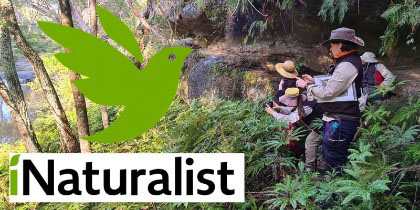 The Great Southern BioBlitz (GSB) is an exciting international initiative that embarks on an intensive biological survey during the vibrant spring season of the southern hemisphere. The GSB was established in 2020 during the global pandemic by a group of bioblitz enthusiasts in Australia. The goal of the GSB is to document the flora, fauna, fish and fungi of the southern hemisphere while providing a platform for groups, associations, local governments and individuals to encourage engagement in citizen science. This collaborative effort is facilitated through the online platform iNaturalist.
The Great Southern BioBlitz (GSB) is an exciting international initiative that embarks on an intensive biological survey during the vibrant spring season of the southern hemisphere. The GSB was established in 2020 during the global pandemic by a group of bioblitz enthusiasts in Australia. The goal of the GSB is to document the flora, fauna, fish and fungi of the southern hemisphere while providing a platform for groups, associations, local governments and individuals to encourage engagement in citizen science. This collaborative effort is facilitated through the online platform iNaturalist.
In the past three years, GSB has proved to be a resounding success in engaging individuals with nature and expanding their knowledge of local flora and fauna.
iNaturalist
iNaturalist is one of the world’s most popular biodiversity observation platforms. It is an online, biodiversity-focused, citizen science platform and app. Its main goal is to create a nature-based social network where like-minded users can share photos of interesting organisms they've observed. iNaturalist has evolved over time to become a valuable biodiversity database tool and is used by more than 2.5 million people globally, including amateur naturalists, museum curators, and world experts in their field.
Every observation you upload becomes a valuable data point representing an encounter with a species at a point in space and time. Anyone, anywhere in the world, with a smartphone can download the app and start posting images and descriptions of their observations. Artificial intelligence narrows down the ID first, and you can share your findings with others to confirm it. A large community of identifiers helps to confirm the species observed, after which it becomes labelled as ‘research grade’. Research grade observations are then piped into databases like the Atlas of Living Australia and the Global Biodiversity Facility where they can be used by scientists, schools and more for research.
Want to learn more about iNaturalist?
- Join the Introduction to iNaturalist workshop
- Detailed guide to iNaturalist for Australia
- Getting started guides on iNaturalist
Participate in the Great Southern Bioblitz 2024
- Join the iNaturalist community – download the iNaturalist app or upload your photos onto iNaturalist Australia. After you have signed up by entering a username and password your observations will be automatically recorded under the project for the locality where the recording occurred.
- Make nature observations from 20 to 23 September. You can upload your observations until 7 October 2024.
- Register as a Great Southern BioBlitz participant to receive project updates and a certificate at the end of the bioblitz.
- Join your local council Great Southern BioBlitz project page, see what has been observed and help identify species:
Microbats and vineyards
We don’t tend to associate bats with winemaking except to consider that flying foxes or fruit bats might happily eat grapes. But microbats wouldn't – they're insectivores – so I was fascinated by an article in AgJournal, a supplement published in The Weekend Australian and taken from The Weekly Times. This featured a vineyard in the Strathbogie Ranges in Victoria which is one of several involved in a research project with University of New England (UNE).
The vineyard, a significant producer of 2,500 t of grapes per year, is Fowles Wines and the business mantra of proprietor Matt Fowles is ‘to farm in nature's image’. The partnership with UNE was triggered by his observations that the vines and fruit in locations with microbat populations were thriving and healthier than those elsewhere on the property.
The UNE research is led by Dr Xenon Czenze and Dr Heidi Kolkert whose research had already established that bats play a vital role in pest control in New England vineyards. Fowles Wine has more than a dozen acoustic detectors arranged around the vineyard, a significant bat-monitoring system, and also has a partnership with Euroa Arboretum, with insectariums established to catch and monitor insect comings and goings. Not all insects are bad, and information on the good ones is also essential! All this is capped by attention to and encouragement of the native flora, from bordering bushlands and forests to grasses growing beneath the vines to cool the soil and roots.
The Secret Garden
We made only one submission in the last two months. This was in relation to a public hearing on a Ku-ring-gai Council Planning Proposal to change the classification of land at 1192 Pacific Highway, Pymble from community to operational.
This land is commonly known as the Secret Garden. It is a small block (974 m2) that contains several mature trees such as Blue Gums and Blackbutts. It is classified as Blue Gum High Forest, a critically endangered ecological community. About half the land is subject to easements for Sydney Water infrastructure. To get access one has to go down several steps that were installed for Sydney Water’s use. According to council the land is not suitable to be used as public open space.
The land itself is weed infested but could quite easily be regenerated with a native shrub layer. Apart from the steps the land is inaccessible with the railway line below and private land either side. On the northern side the apartment block residents benefit from the views over the forest in contrast to the heavy traffic of the Pacific Highway. On the southern side there is an old house that is ripe for redevelopment in line with the high density zoning.
Council argues that retaining the site as community land will be a continuing expense with little benefit to the community. If the land were to be classified as operational, council could sell the block. Its value would be realised if it could be amalgamated with the block next door and allow a larger apartment development of the old house using a floor space ratio combining both blocks. For this reason council has been keenly supporting the reclassification.
Land reclassification process
The land reclassification involves several stages. We won‘t go into the detail. The proposal has reached the stage of being considered by an independent commissioner. The commissioner has to consult affected agencies (eg Sydney Water and Transport NSW), invite public submissions and hold a public hearing. The commissioner then writes a report that is reviewed by council that then decides whether the proposal should go to the Department of Planning that will make the necessary amendment to the local environment plan.
Seventeen public submissions were received opposing the reclassification and one in favour.
Outcome of the consultation process
The commissioner’s report recommended that the proposal should not proceed for several reasons including:
- it would risk compromising Sydney Water’s access to these critical assets for maintenance;
- a development application or subdivision/ amalgamation could negatively impact the values of the site state heritage registered water reservoirs in nearby Telegraph Road (see https://en.wikipedia.org/wiki/
_1_and_No._2); - the majority of the site is mapped on the biodiversity values map, which identifies land with high biodiversity value that is particularly sensitive to impacts from development and clearing;
- the site assists with urban cooling in the vicinity due to shade from the mature trees which contributes to Ku-ring-gai’s urban tree canopy in the Urban Forest Strategy.
Commissioner’s recommendation
The commissioner recommended that the land remains in council’s ownership and as community land, and that it is ‘improved’ as a rest area and wild garden. This would ensure:
- the land is available to the whole community for informal recreation
- retention of the Sydney Water easements
- no structures are placed on the land
- the elements of the land that the local residents and community value, ie the leafy green outlook and wildlife habitat, would be retained
- minimal maintenance required by council because interested local residents could assist with maintenance
What happens next?
It is still up to council to decide whether the planning proposal for the reclassification should be submitted to the Department of Planning, but they have to consider the submissions and the commissioner’s report that concluded that it should be withdrawn.
Good news – Lourdes development rejected
The prolonged process of applications to redevelop the Lourdes Retirement Village in Stanhope Road, Lindfield (explained in (explained here) culminated in a Planning Panel hearing in December 2023. The panel rejected the proposal so the next stage was for the Minister for Planning to consider the panel’s recommendation.
It has now been announced that the minister has accepted the panel’s advice that the proposal was not appropriate because issues such as bushfire risk and ecological impacts had not been adequately addressed.
Nevertheless, the owner, Levande, still has the right to develop the land. The most telling evidence against the proposal came from Ku-ring-gai Council. The Department of Planning has acknowledged this by stating that any new proposal should only be developed in close collaboration with council to address the unacceptable risks.

